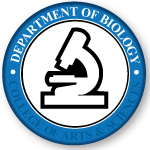Comparative proteomic analysis of two Entamoeba histolytica strains with different virulence phenotypes identifies peroxiredoxin as an important component of amebic virulence
Document Type
Article
Publication Date
9-2006
Publication Title
Molecular Microbiology
Volume
61
Issue
6
First Page
1523
Last Page
1532
Abstract
Entamoeba histolytica is a protozoan intestinal parasite that causes amoebic colitis and amoebic liver abscess. To identify virulence factors of E. histolytica, we first defined the phenotypes of two E. histolytica strains, HM-1:IMSS, the prototype virulent strain, and E. histolytica Rahman, a strain that was reportedly less virulent than HM-1:IMSS. We found that compared with HM-1:IMSS, Rahman has a defect in erythrophagocytosis and the ability to cause amoebic colitis in human colonic xenografts. We used differential in-gel 2D electrophoresis to compare the proteome of Rahman and HM-1:IMSS, and identified six proteins that were differentially expressed above a fivefold level between the two organisms. These included two proteins with antioxidative properties (peroxiredoxin and superoxide dismutase), and three proteins of unknown function, grainin 1, grainin 2 and a protein containing a LIM-domain. Overexpression of peroxiredoxin in Rahman rendered the transgenic trophozoites more resistant to killing by H2O2 in vitro, and infection with Rahman trophozoites expressing higher levels of peroxiredoxin was associated with higher levels of intestinal inflammation in human colonic xenografts, and more severe disease based on histology. In contrast, higher levels of grainin appear to be associated with a reduced virulence phenotype, and E. histolytica HM-1:IMSS trophozoites infecting human intestinal xenografts show marked decreases in grainin expression. Our data indicate that there are definable molecular differences between Rahman and HM-1:IMSS that may explain the phenotypic differences, and identify peroxiredoxin as an important component of virulence in amoebic colitis.
Recommended Citation
Davis, Paul H.; Zhang, Xiaochun; Guo, Jianhua; Townsend, R. Reid; and Stanley, Samuel L., "Comparative proteomic analysis of two Entamoeba histolytica strains with different virulence phenotypes identifies peroxiredoxin as an important component of amebic virulence" (2006). Biology Faculty Publications. 64.
https://digitalcommons.unomaha.edu/biofacpub/64

